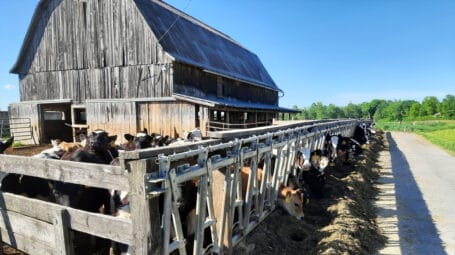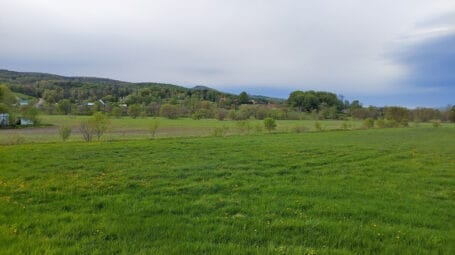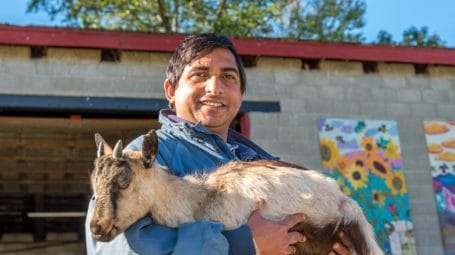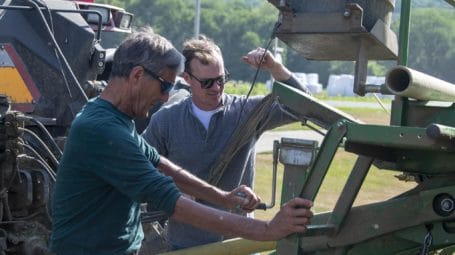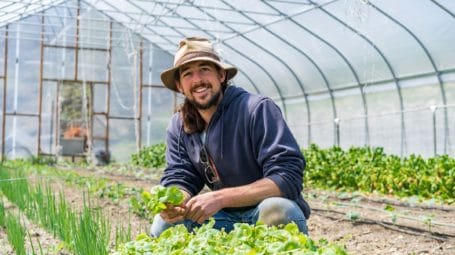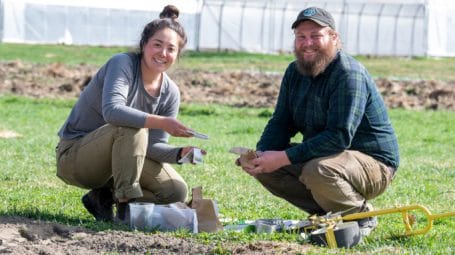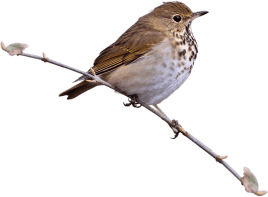Conservation helps two generations of farmers start businesses across 30 years
When we protected a 143-acre farm in Randolph 1994, we had no idea who would be farming it 30 years on. But we knew it would still be farmland.
At the time the land was first conserved, funding from selling a conservation easement reduced the price of the land. That helped beginning farmers Brent and Regina Beidler buy the land. They went on to run an organic dairy for years. “They often told me they wouldn’t be on the farm if it hadn’t been conserved,” remembers VLT’s Donna Foster.
When Regina and Brent decided to retire, they listed the farm on Vermont Land Link, which helps farm buyers and sellers find each other.
From Rhode Island to Randolph: Moving a farm to Vermont
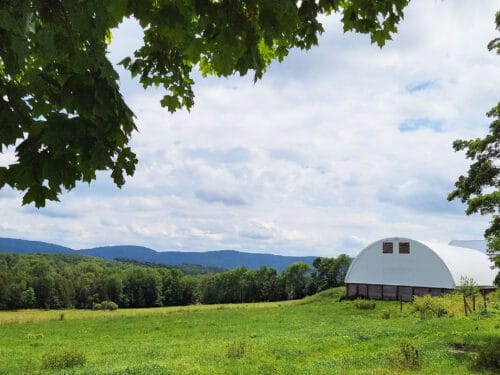
When Rhode Island farmers Katie Steere and Ben Aalvik realized that they couldn’t find land for their growing pastured meat business they started to look north, to Vermont.
They dreamt of 100-odd acres of Vermont farmland, a barn for their animals, peonies in the garden—all near a town as well as a swimming hole. They found all that and more at the Beidler farm.
The rest, as they say, is history. The land now hosts Wild Earth Farm’s grass-fed beef and lamb farm. Ben and Katie sell beef and lamb from their farmstand, and ship nationwide with online sales. They also graze for other producers and continue some cropping as the Beidlers had done.
Keeping Vermont farmland affordable
Like the farmers before them, Katie and Ben are thinking about the farm’s future. They worked with us to add more conservation protections to make sure the Vermont farmland will be accessible and more affordable to future farmers. Conservation funding once again helped make the farm more affordable to a new set of farmers.
Congratulations and a big welcome to Katie and Ben! And thanks to the Beidlers for their decades-long land stewardship, and for their thoughtful and successful search for new farmers to take it over.
The investment of conservation funding from Vermont Housing & Conservation Board and Vermont Agency of Agriculture, Foods & Markets supported both transitions on this farm and made a real difference to helping these businesses grow.

